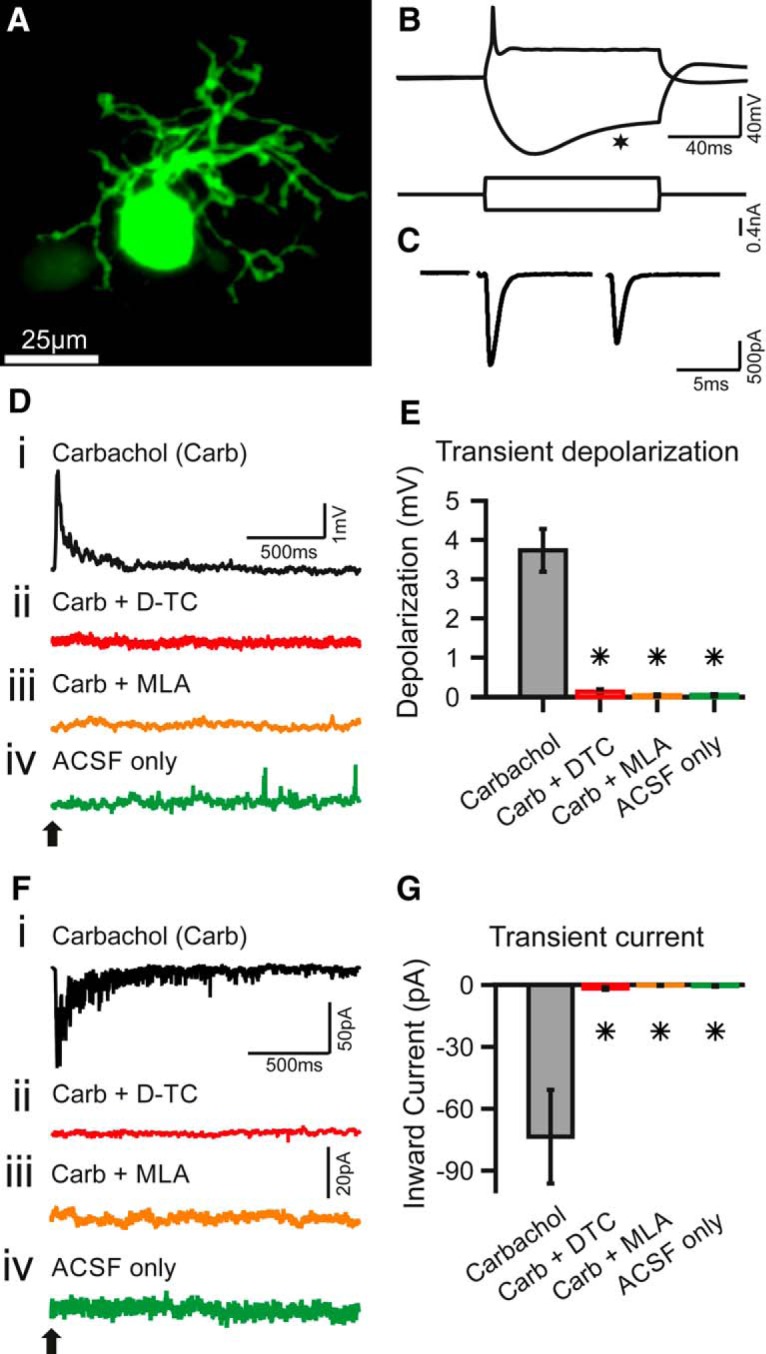Figure 1.

Carbachol application elicits transient depolarization and inward current in SBCs. A–C, Identification and characterization of SBCs. A, Maximum intensity z-projection of confocal stacks from a biocytin–streptavidin-labeled SBC. Scale bar, 25 µm. B, Current-clamp recording of a P17 SBC; stimulus is shown below. SBCs typically fire one to two APs upon suprathreshold depolarizing currents and show a pronounced voltage sag upon hyperpolarizing currents (asterisk). Calibration: 40 mV, 40 ms (top); 0.4 nA (bottom). C, The synaptic currents recorded were elicited by electrical stimulation of the auditory nerve in the same SBC as in B; −60 mV holding potential. The succession of two EPSCs shows clear depression, typical for SBCs in vitro (stimulus artifacts removed). Calibration: 500 pA and 5 ms. D–G, Transient effects of carbachol-mediated nAChR activation. D, Example traces of current-clamp recordings with puff application of carbachol (Carb; application time is marked by a black arrow). Di–iv, The transient depolarization elicited by the carbachol puff (i) was abolished when the slice had been superfused with D-TC, a general nAChR blocker (ii); or with MLA, a specific α7 nAChR blocker (iii); and with the puffing only the vehicle (ACSF) yielded no effect (iv). Calibration: 1 mV and 500 ms (applies to all traces). E, Population data for SBC current-clamp recordings. Asterisks indicate significant difference compared with the carbachol condition (p < 0.01, Kruskal–Wallis test with Bonferroni post hoc test; carbachol, n = 13; Carb+DTC, n = 8; Carb+MLA, n = 4, ACSF only n = 5). F, Example traces of voltage-clamp recordings at −60 mV holding potential with carbachol application (application time marked by a black arrow). Fi–iv, SBCs showed a transient inward current upon carbachol application (i), which was abolished under blocker washin of D-TC (ii) and MLA (iii); and no current was observed upon puff application of the vehicle only (iv). Calibration: i, 50 pA and 20 pA; ii–iv, 50 pA and 500 ms. G, Population data for SBC voltage-clamp recordings. Asterisks indicate significant difference compared with carbachol condition (p < 0.01, Kruskal–Wallis test with Bonferroni post hoc test; carbachol, n = 19; Carb+DTC, n = 7; Carb+MLA, n = 4; ACSF only, n = 4).
